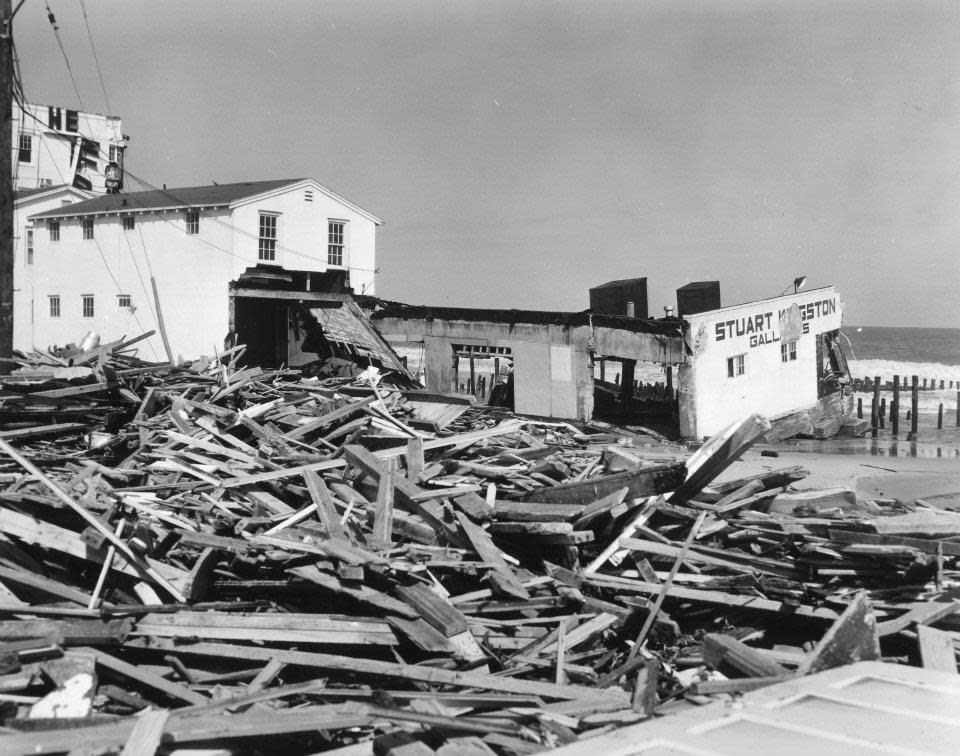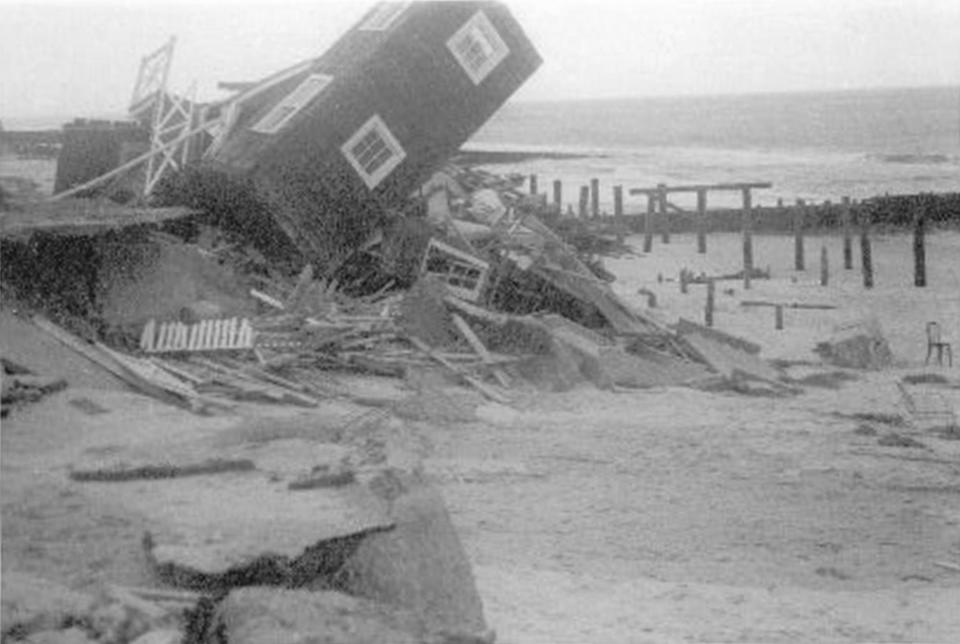Storm of 1831: When nor'easter turned southern Delaware into frozen tundra
“The storm exceeded anything of its kind that ever occurred before in the memory of the oldest inhabitants,” wrote Millsboro resident William Waples on Feb. 6, 1831.
“A very large amount of property, located on all of our water courses, including cattle, hogs, fences, hay, is swept away. In many instances, houses, the land where the houses stood, the household goods, corn cribs and the contents, were carried off.”
Fast moving summer hurricanes pack a wallop, and over the years, these fast moving storms have done considerable damage to southern Delaware. Slow moving nor’easters, however, are frequent visitors to the coast, and at times, these plodding storms can pound the coast for several days and do more damage than a hurricane.
Nor'easters have brought major ice storms through the years

In March 1888, a nor’easter caused an ice storm in Lewes sinking several vessels and damaging dozens of others. In December 1914, a storm carried away the boardwalk and destroyed Surf Avenue, an oceanfront promenade.
The “Big One,” the grandaddy of all Delaware storms, ravaged the coast in March 1962, leaving a trail of destruction from Fenwick Island to Cape Henlopen. The nor’easter chronicled by William Waples in 1831 has been mostly forgotten, but it rivals the worst storm in coastal history.
Although Millsboro was a considerable distance from the coast, the water driven by the 1831 nor’easter flooded the town and the surrounding area. According to Waples, “The tide at this place was four feet higher than ever known — it ran over my mill dam like a heavy surf, carrying everything before it.”

In 1831, the Delaware coast was a ribbon of natural sand with no oceanfront towns between Fenwick Island and Cape Henlopen. Many storms swept along the coast demolishing the dunes, but doing little damage to manmade structures, because there were so few oceanfront buildings.
Lewes, snuggled on the bay behind the cape, was generally protected by storm-driven ocean waves. In 1831, however, the storm whipped up the bay waters threatening the vessels in the bay and the town of Lewes.
1831 storm was so fierce that boats were driven ashore
According to an account carried in the July 16, 1831 edition of the Pennsylvania Register, two schooners and several pilot boats were driven ashore, and “The damage done here [Lewes] is conservable; the foundation of Mrs. Truxton house and kitchen have been washed away, and the floor and furniture are all adrift; her sons house is nearly in the same wrecked condition, and also that of Daniel McAlister.”
DELAWARE COASTAL. STORMS: Before and after: How Rehoboth Beach bounced back from Storm of '62 devastation
Several families fled their homes and took refuge in the schoolhouse on Shipcarpenter Street.
Although the creek normally afforded these vessels some protection against high water and pounding waves, the 1831 storm was so fierce that, “The packet sloop, Breakwater, stern went into Richord's tavern house, and her main boom about six foot into his kitchen. The sloop, Josephine, was on the wharf and stove in the underpinning of Mr. Rodney's granary. The bridge across Lewes Creek gave way and all the wharves are gone.”
After the storm cleared, however, the temperatures continued to drop, turning southern Delaware into a frozen tundra. According to Waples, “Since the storm, the weather has been dreadfully severe and at this time the entire country is covered with ice and it is as much we can do to travel at all, and when we do travel, it is mostly on foot.”
From his vantage point in Millsboro, Waples wrote, “The whole face of the earth appears to be covered with water, converted into ice, and our principal occupation is to make fires and sit by them.”

Principal sources
Samuel Hazard, ed., The Register of Pennsylvania, Vol. 7, No. 16, July 16, 1831, Philadelphia: William F. Geddes, printer, 1831, pp. 246-250.
Baltimore Patriot, Feb. 12, 1831, http://www.newspaperabstracts.com/link.php?action=detail&id=79845
Connecticut Courant, Feb. 15, 1831, http://www.newspaperabstracts.com/link.php?action=detail&id=60657
This article originally appeared on Salisbury Daily Times: A nor'easter left a trail of damage and ice in southern Delaware

